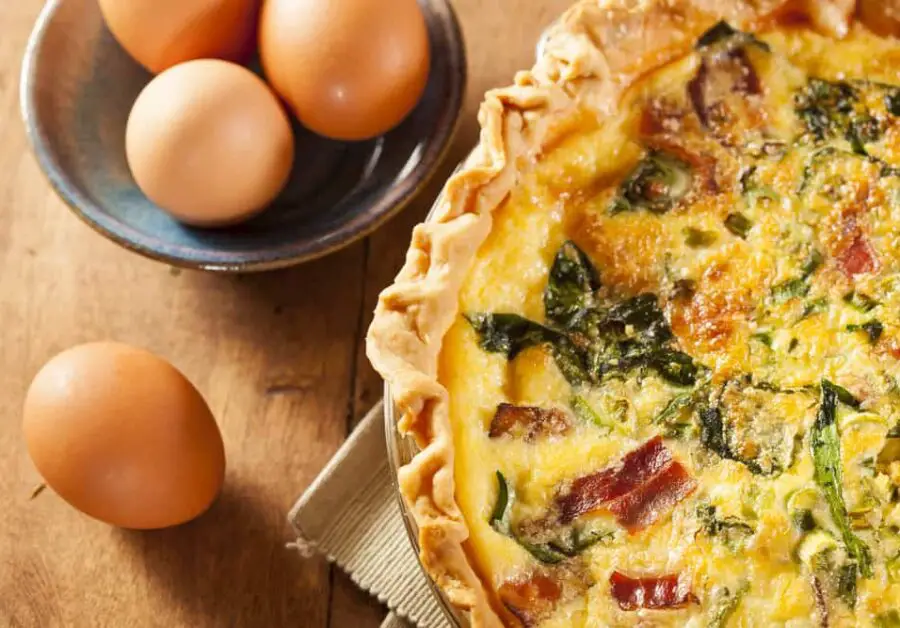Tarts or quiche?
Which do you love more?
For many of us who crave anything having to do with pastry, the answer is that it depends on what we’re in the mood to eat or perhaps the time of day. Maybe you’ve got a sweet tooth craving to satisfy or maybe you’re looking for something rich, savory and satisfying.
The wonderful thing about tarts or quiches is that they can both do the job but technically speaking, which is which and why? That question has been debated for seemingly as long as people have enjoyed eating them and isn’t likely to cease anytime soon.
So, is there any actual difference between them?
The truth is that although they’re minor ones, there are differences.
Simply put, the key differences between a tart and a quiche are that (1) a tart can be sweet or savory whereas a quiche is always savory and (2) a tart is often prepared with a custard filling whereas a quiche always contains one.
Besides these primary differences, there are some others between these two delectable dishes which we’ll cover in detail.
Origin and Historical Differences
As if the differences between tarts and quiche weren’t fuzzy enough already, the French word “tarte” can also be interpreted to mean “pie” but we’ll leave that confusion for another time.
It’s believed that tarts evolved and harkened back to a traditional approach of layering food which is thought to have Medieval roots, occurring sometime after 1550. During this period, foods like these were reserved for royalty and nobility and thought to be of much higher quality than the common pie, which preceded the creation of tarts by about two hundred years.
It’s at this point that some suspect the confusion with quiche begins since early versions of tarts were almost always savory having been filled with meat. As time and tastes evolved, tart fillings shifted to almost exclusively sweet featuring fillings made with custard or fruit.
Like the tart, the quiche traces its heritage back to France as well. However, food historians also trace similar dishes in English and Italian cuisine that predate the French version that most of us know so well.
No matter the exact origins, unlike the tart, the quiche began as a savory dish and with rare exceptions, remains so to this day.
| Feature | Tart | Quiche |
|---|---|---|
| Etymology | “Tarte” can also mean “pie” | Of Germanic origin, from the word “kuchen” meaning cake |
| Historical Roots | Medieval (after 1550) | French, but similar dishes in English and Italian cuisine predate the French version |
| Original Filling | Savory (meat) | Savory |
| Current Filling | Mostly sweet (custard or fruit) | Mostly savory |
Ingredient Differences
Both tarts and quiche are made from shortcrust pastry, which is a very versatile type of pastry crust that can be used for either savory or sweet dishes.
The key ingredients in shortcrust pastry include lard, butter, shortening and flour. When combined, they’re bound with water, rolled and shaped. The amount of fat used in shortcrust pastry is half of the amount of flour, which is what gives the pastry the rich, buttery taste it’s known for.
Aside from the crust, if the filling is sweet (berries, custard, etc.) and is not served warm, it’s considered a tart. However, if the filling is savory and served warm, it’s considered a quiche.
| Tart | Quiche |
|---|---|
| Made from shortcrust pastry | Made from shortcrust pastry |
| Key ingredients include lard, butter, shortening and flour | Key ingredients include lard, butter, shortening and flour |
| Sweet filling, not served warm | Savory filling, served warm |
Taste and Mouthfeel Differences
Since most quiche recipes contain large amounts of egg, it should come as no surprise that egg will be the most dominant flavor you’ll encounter when eating quiche. Also, because of the high amount of egg used, quiche tends to be much thicker and fluffier than a tart.
In addition, since a quiche is almost always savory, you’re also likely to experience a denser, more chewy texture from other ingredients which are commonly used in quiche like meats, vegetables and cheese. For example, the world’s most popular quiche, known as Quiche Lorraine, often contains a blend of bacon, cheese and onions.
In contrast to the heartiness of quiche, tarts are often more delicate, flaky and of course, most of the time they’re sweet.
Like quiche, there are almost an innumerable number of popular recipes but some of the most well known include the meringue tart, and two famous British versions called the Treacle tart and the Bakewell tart.
| Feature | Quiche | Tart |
|---|---|---|
| Dominant Flavor | Egg | Varies |
| Texture | Thick and fluffy | Delicate and flaky |
| Savory or Sweet | Savory | Mostly sweet |
| Popular Ingredients | Eggs, meats, vegetables, cheese | Varies, but can include meringue, treacle, and Bakewell |

Hi, I’m Jenny. I have many interests and, some would say, eclectic passions. A few words that best describe me? Hmm, well… Amateur surfer, professional traveler, food lover and writer extraordinaire. Oh, and lover of all furry, four-legged creatures!

